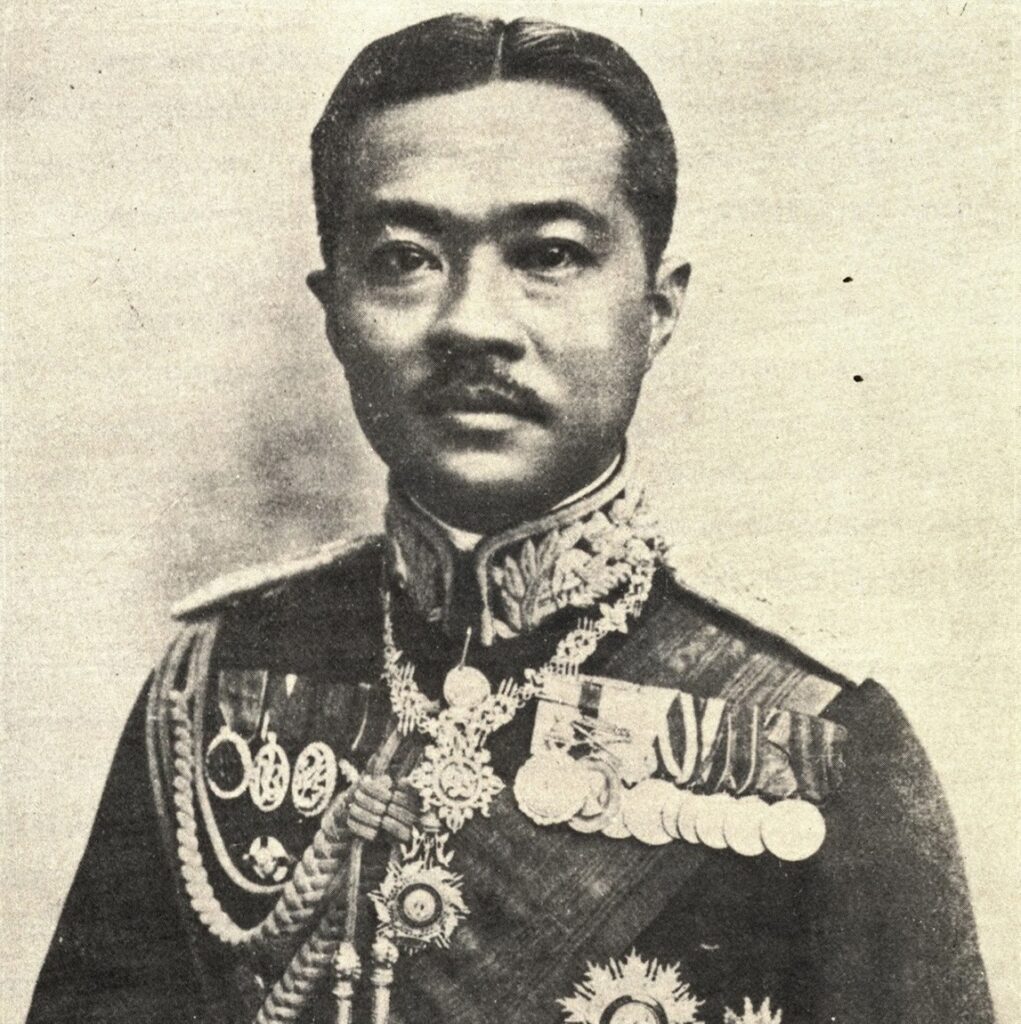
Originally the piece existed as a ‘song chan’ song (a moderate tempo piece) for a Mahori ensemble, dating back to the Ayutthaya period. The piece, formerly known as ‘Yikin Hok Bot’ or ‘Likin Hok Bot’, was in one part, played in a ‘Prob-Kai’ rhythmic drum cycle, consisting of 8-beat cycle. Later, Phra Praditphairoh (Master Mee-khaek or Mee Duriyang) enlarged it into a ‘sam chan’ piece and Jang-wang Tua Pattayakosol reduced it into a ‘chan deow’ Piece, making up a complete ‘tao’ (consisting of slow, moderate, and fast movements).
The lyrics was adapted from ‘I-nao’, a romantic literature written by King Rama II.
“++ฐานข้อมูลเพลงพระนิพนธ์ทูลกระหม่อมบริพัตรฯ++.” 2017. Rtnsm.com. 2017. https://www.rtnsm.com/nms-military/music%20page/music-38.html.
| Grade | |
|---|---|
| ความยาว (Duration) | |
| ชนิดวง (Ensemble Type) | Full Wind Ensemble / Full Band (วงดุริยางค์เครื่องลมขนาดใหญ่) |
| ไม่มีค่าใช้จ่าย (Free Music) | |
| สไตล์เพลง (Style) |
Piccolo
Flute
Oboe
Clarinet in Eb
Clarinet in Bb 1
Clarinet in Bb 2
Alto Saxophone
Teor Saxophone
Baritone Saxophone
Horn in F
Trumpet in Bb
Trombone
Bass Trombone
Baritone
Euphonium 1
Euphonium 2
Tuba
เราใช้คุกกี้เพื่อเพิ่มประสิทธิภาพ และประสบการณ์ที่ดีในการใช้งานเว็บไซต์